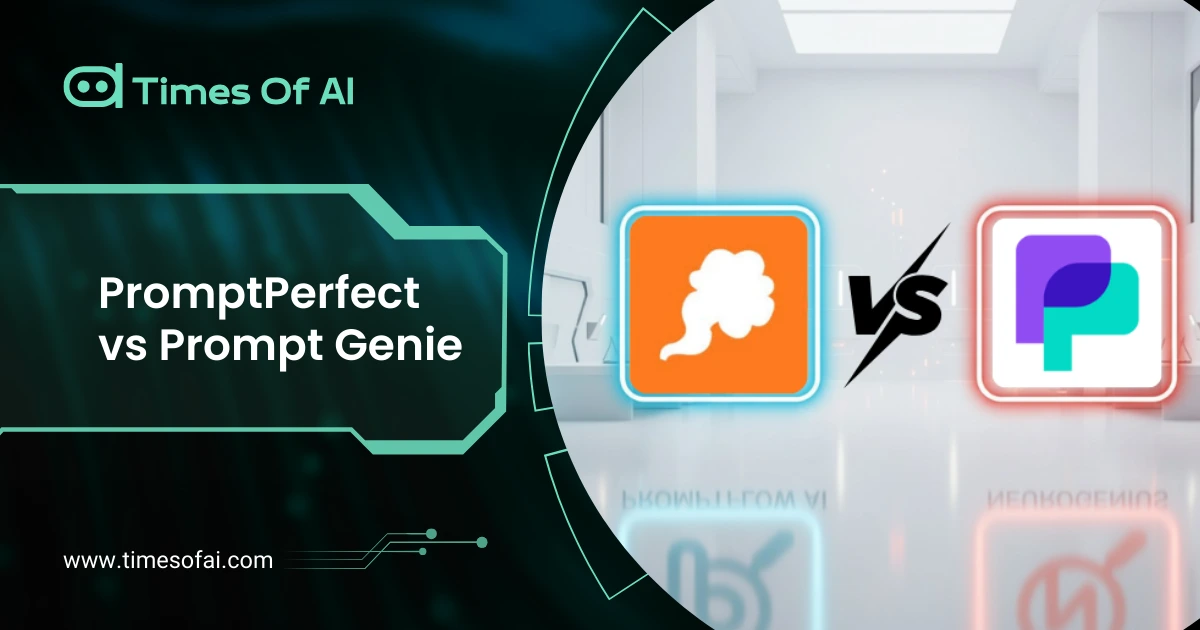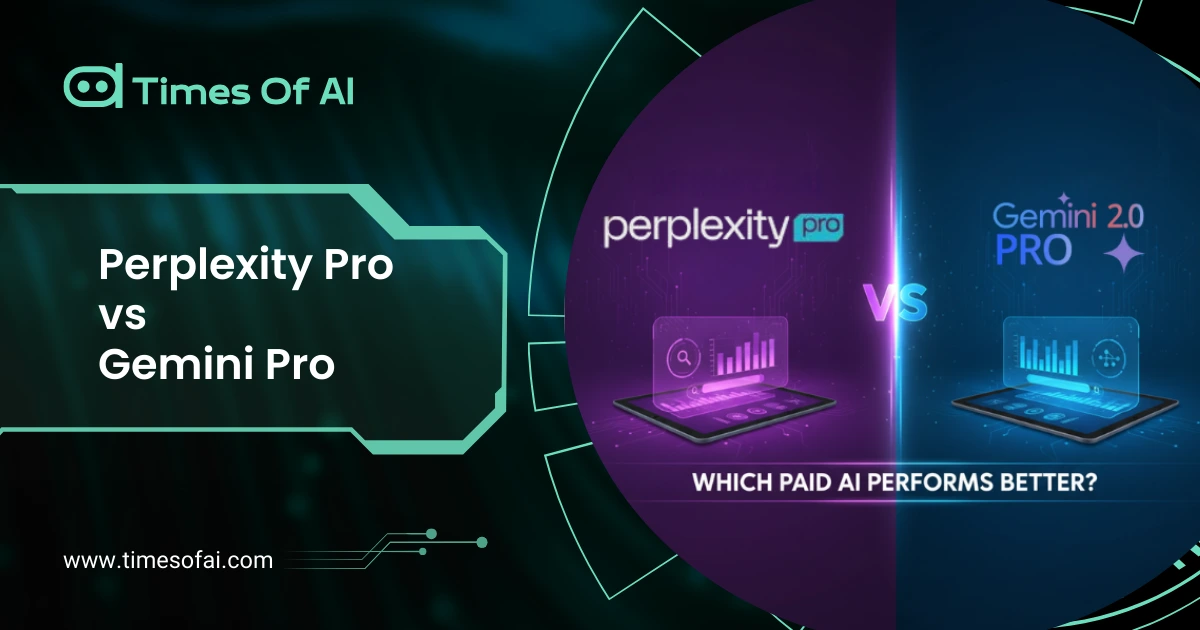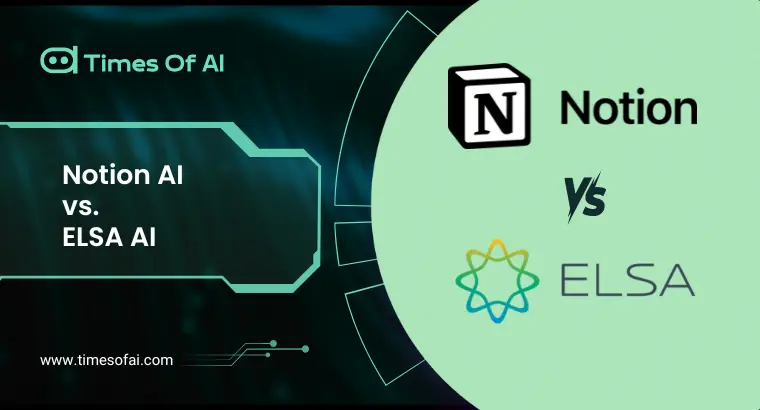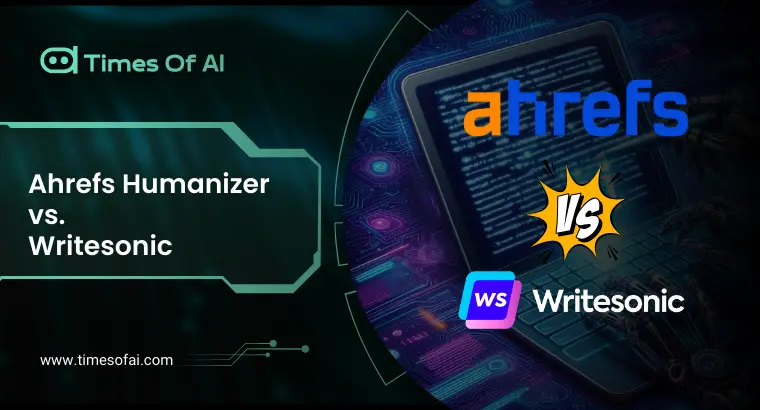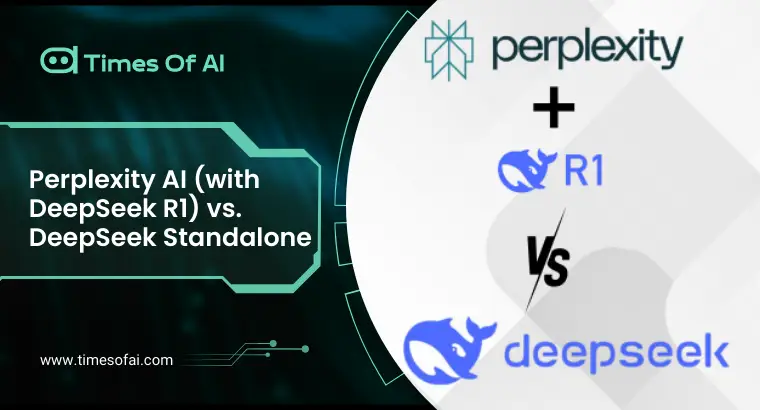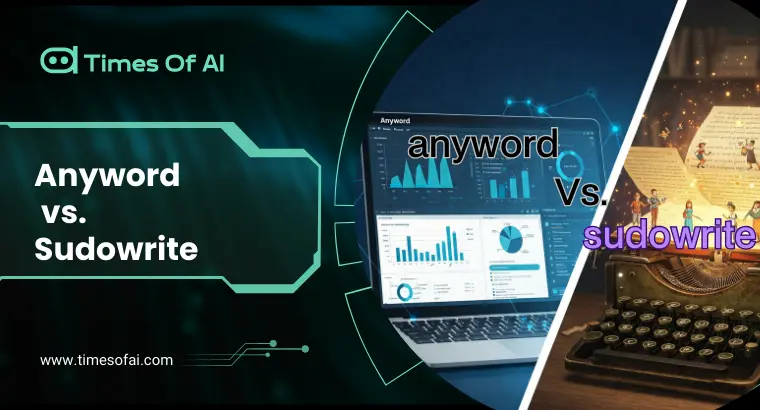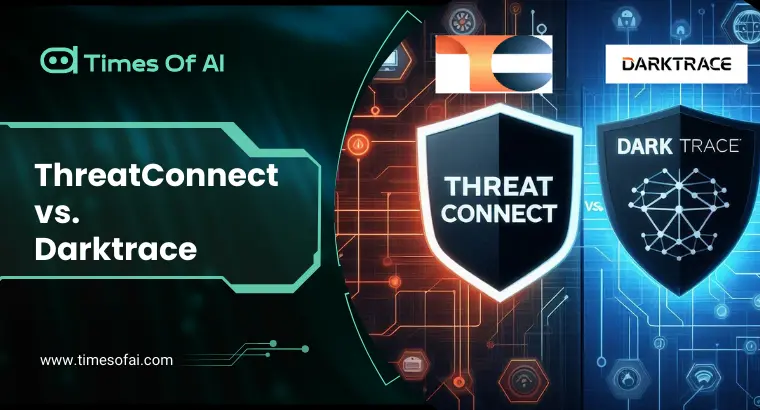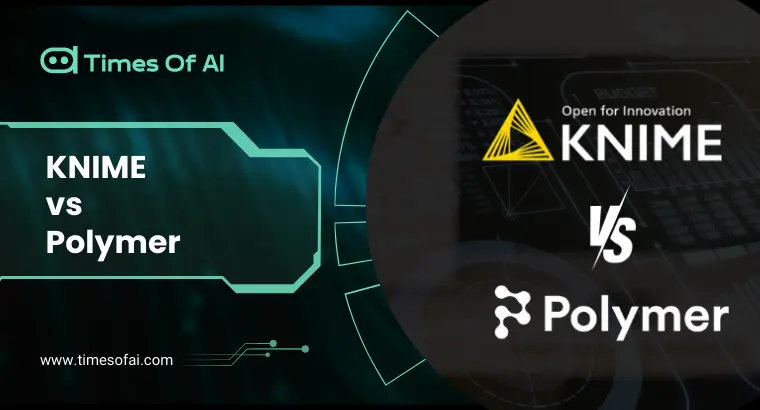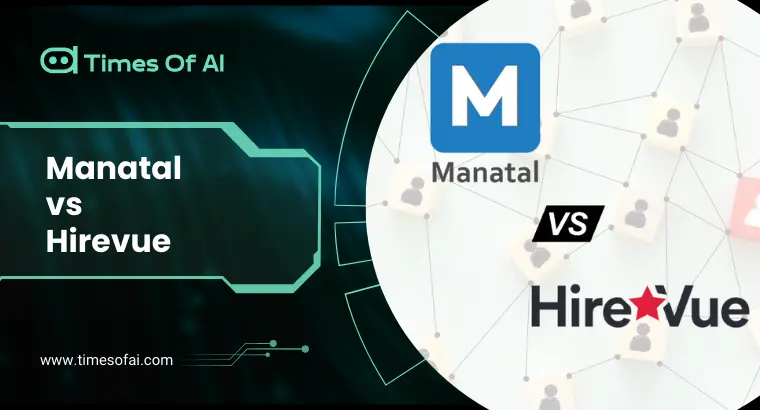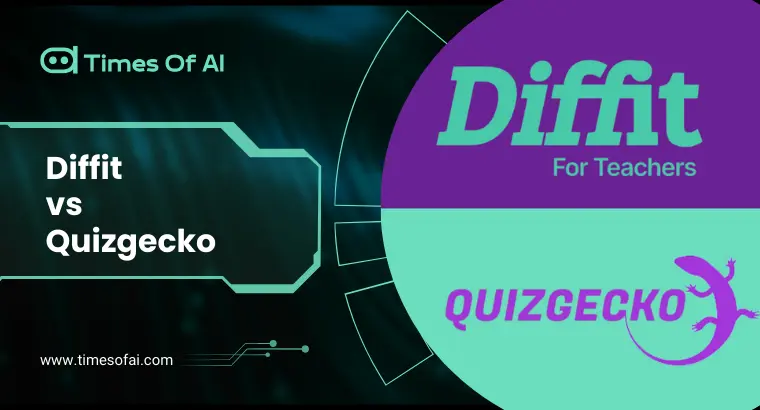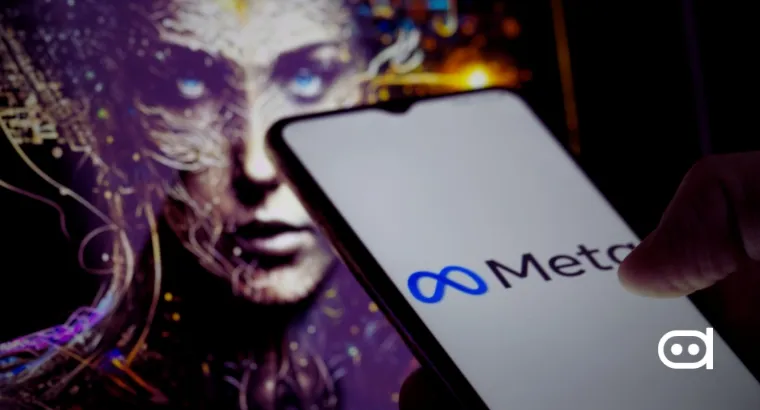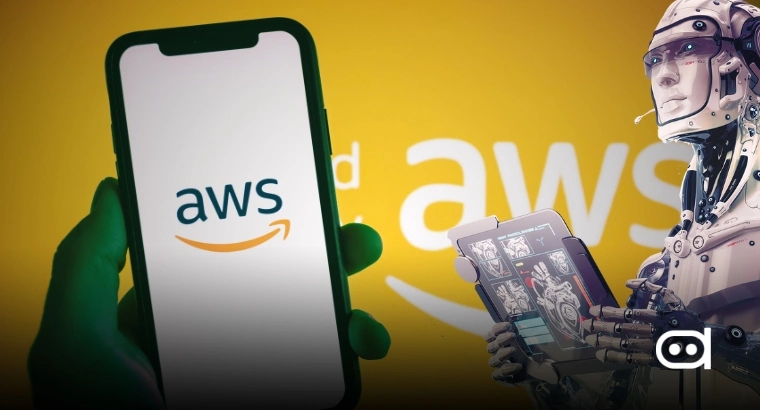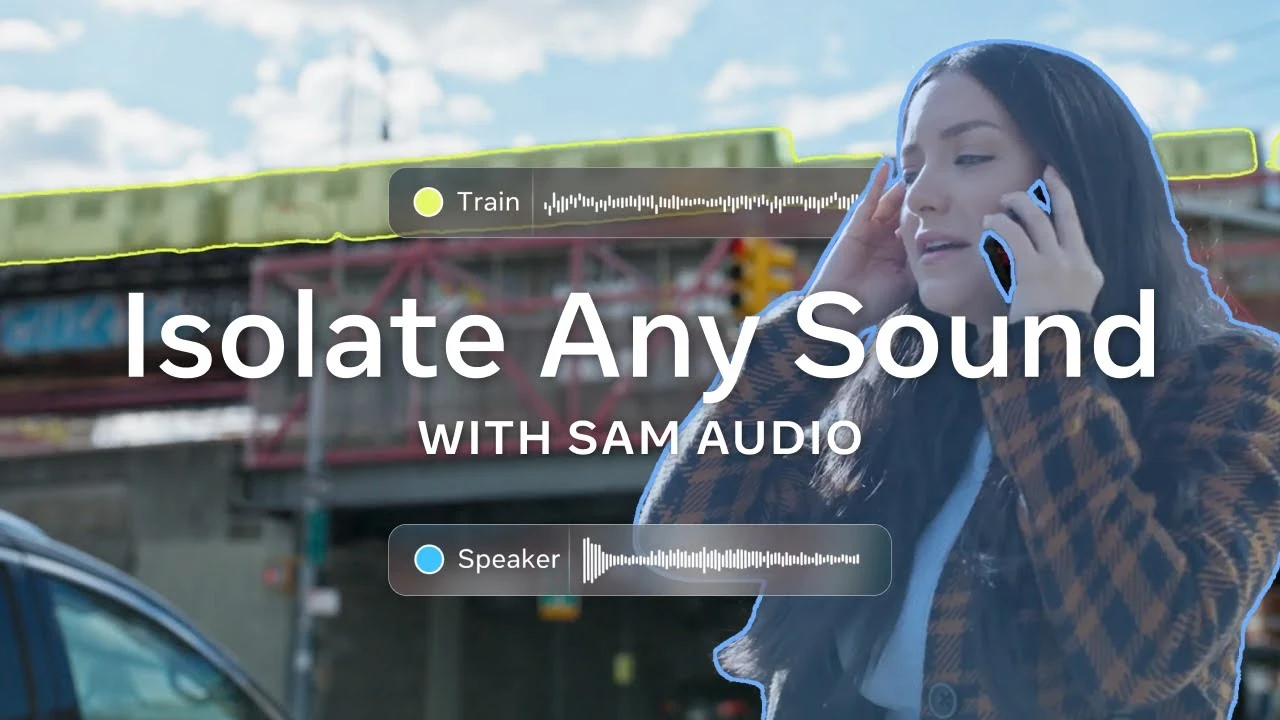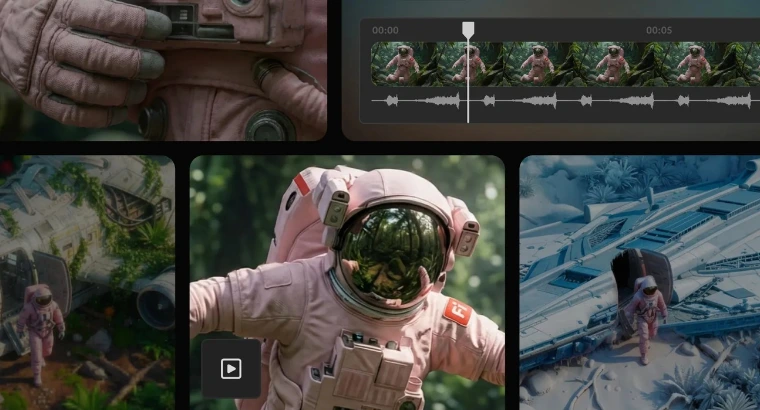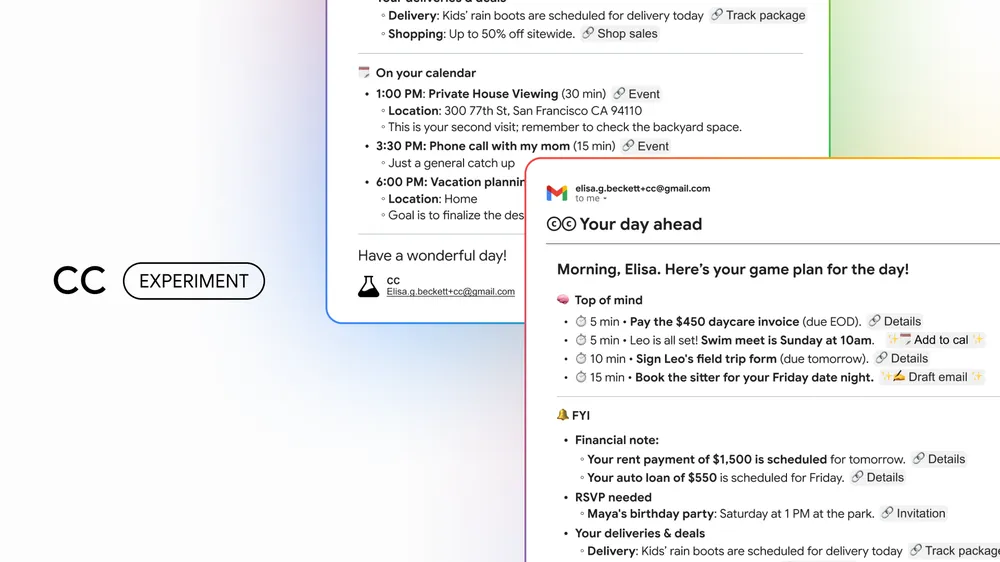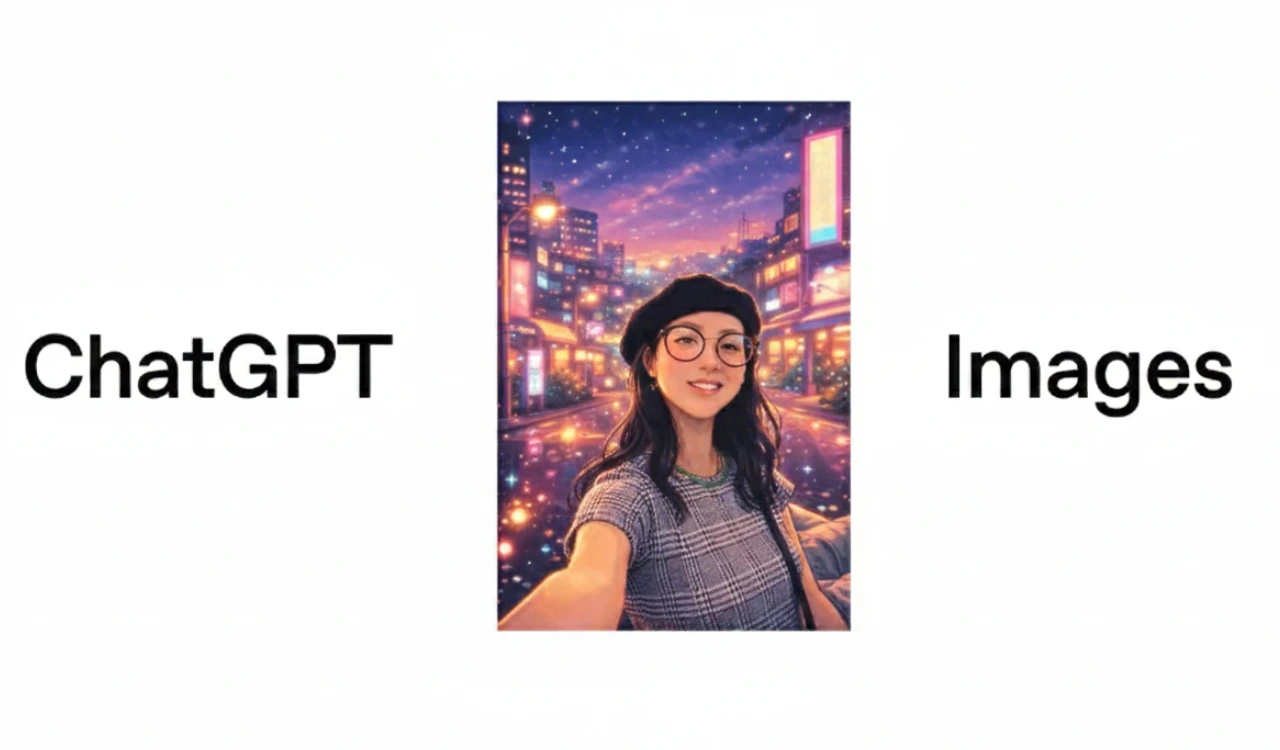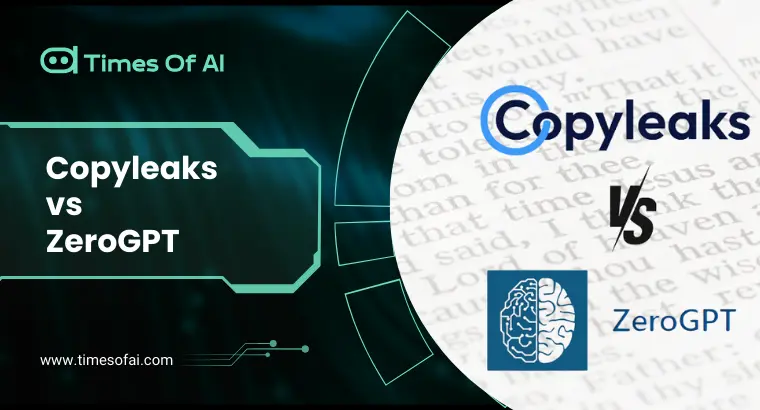
AI content detection tools are engineered to prevent plagiarism and uphold the authenticity of the work. It is not only involved in the content field but extends from creative to industrial sectors. Academic institutions aim to maintain integrity, while content marketers require originality and trustworthiness in their output. These requirements and the need for verisimilitude led to the emergence of advanced AI content detection tools. Copyleaks and ZeroGPT offer diverse features and abilities to meet the needs of users. This article explores their strengths, differences, and performances to help you pick the best fit.
Key Takeaways
- Learn why AI-generated content detection is vital for academia and business
- Understand what Copyleaks is and how it is different from its competitors
- Know about ZeroGPT’s unique value proposition and attraction to its end-users
- Make a comparison across key parameters to decide which is the best solution for you
- Know for which specific use cases and industry each of them is best suited
What is Copyleaks?
Founded in 2015, Copyleaks is a pioneer that specializes in AI detection and content verification. This helps various professionals maintain originality and ethics in the field of education, businesses and content creation to protect the credibility, authenticity and originality of their work in an AI-influenced landscape.
Copyleaks is a versatile tool offering robust AI detection and plagiarism-checking features. Without requiring a login, users can perform limited analyses, and the free version allows text submissions through various methods, including pasting text and uploading files, code, or URLs. Special features include the ability to extract text from images and compare text for similarities, making it a powerful tool for academic and enterprise users.
However, its credit-based system can be restrictive. On Copyleaks, each 250 words counts as one credit, and even slightly exceeding this limit results in an additional credit deduction, which may not be cost-efficient for submissions that are long-form. While its avant-garde features provide significant importance, this credit structure may deter users who frequently analyze extensive documents. Overall, Copyleaks is a perfect and excellent tool for in-depth content analysis but may require users to carefully manage credits for optimal use.
What is ZeroGPT?
ZeroGPT is a free AI detection tool that stands out for its accessibility and user-friendly features. It requires no login, allowing users to check up to 15,000 characters at a time. A notable characteristic is its mastery of highlighting AI-detected text and providing suggestions to humanize it, crafting AI-free and authentic content. Additional free tools include AI/GPT Detector, ZeroCHAT-4 & 5, Plagiarism Checker, AI Summarizer, Paraphraser, Grammar Check, Translator, Word Counter, and Email Helper.
ZeroGPT AI content detector is simple to use when it comes to user input. One can just paste the text to be scanned in the provided box and then hit the Detect Text button. It will scan for the macro and micro signs of AI and offer results to the user with the percentage of text that appears to be AI-written. The tool’s history lies in addressing the increasing need to identify AI-generated content in various domains. With a focus on speed and accuracy, ZeroGPT provides results in record time, making it particularly useful for content creators on tight deadlines.
Copyleaks vs ZeroGPT
| Feature | Copyleaks | ZeroGPT |
|---|---|---|
| Accuracy of Detection | 99.12% accuracy | 98% accuracy |
| Supported Content Formats | Wide range of textual and non-textual file types including txt, pdf, docx, doc, rtf, xml, pptx, ppt, odt, chm, epub, odp, ppsx, pages, xlsx, xls, CSV, LaTeX | Direct Text Input and File Upload |
| User-Friendliness | Comprehensive interface, detailed reports | Minimalist design, quick access |
| Pricing and Plans | Free tier subscription plans start at $9.99/month. | Free tier, Pro at $7.99/mo, Plus at $14.99/mo, Max at $18.99/mo. |
| Pricing Plans | 5 Basic plan is free, $18 per quarter, $11 per month, $46 per year. | Free to start, $29 for a monthly subscription, $149 for lifetime access with a one-time payment. |
Understand the Workings of AI Content Detection Tools
How Does Copyleaks Detect AI?
Copyleaks AI content detector uses advanced NLP algorithms that can identify patterns in the text that would indicate AI-generated content. The platform compares content with massive datasets of known AI-written and human-written text to define its origin. Since 2015, it has crawled or sourced trillions of content pages from thousands of universities and enterprises globally and ingested and analyzed all that data for training its models on how humans write. This is how its technology can pick on more accurate sentences with irregularities, which is often the hallmark of genAI.
Additionally, the output provided by Copyleaks is even more refined using machine learning capabilities to ensure the detection of even advanced AI-generated content. Features include deep semantic analysis and cross-language detection that make it the go-to solution for users ranging from academia to enterprise realm.
Functioning of ZeroGPT?
Zero GPT AI technology is essentially reverse generative AI. It is trained on an enormous dataset of different types of text, which makes it a large language model (LLM), just like ChatGPT. However, instead of using this training to generate text, it employs it to analyze text. This analysis allows it to produce a result that predicts the likelihood of the text being AI-written or human-written.
AI detection models should then start getting more and more accurate with time as a larger quantity of AI-generated text becomes widely available. This means more training material for the AI, a bigger dataset of statistical characteristics of humans as well as AI content. Some of the main differences lie in sentence structure, which include:
- How concepts in an article flow together
- Frequency of specific sequences of words
- Examining the sentence structure
- Apt use of nouns, verbs, and adjectives in each sentence
ZeroGPT uses lightweight yet efficient algorithms to evaluate text data for machine-generated features. It focuses on linguistic markers, structural patterns, and stylistic inconsistencies to classify the content as machine-written or not. This tool is faster than others with its focus on speed, processing the text almost in an instant for users who demand quick verification. Designed with simplicity and a user-friendly interface, ZeroGPT prioritizes its status as a powerful tool and aids educators as well as businesses in assessing original content without requiring technical expertise.
Testing the AI Content Detector Tools
To evaluate the performance of Copyleaks and ZeroGPT, we tested both tools using identical content samples. One sample was written by an AI language model, and the other was crafted by a human.
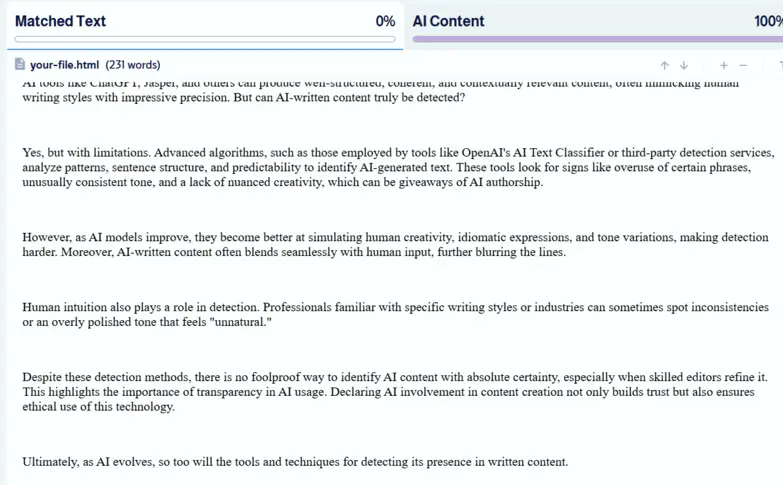 copy-leaks-ai-text-result
copy-leaks-ai-text-result
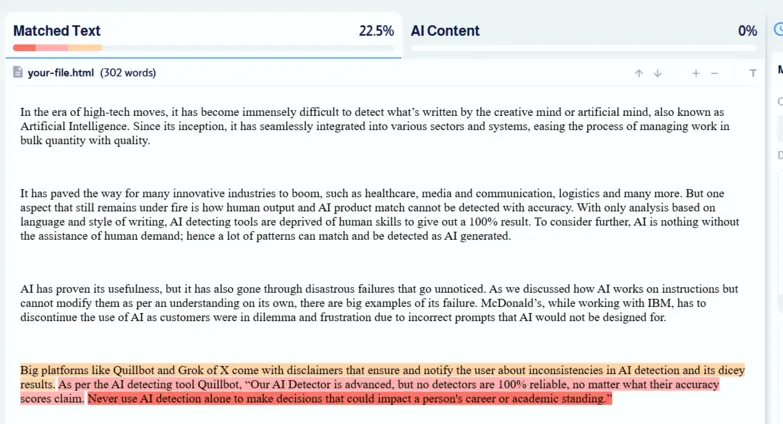 copy-leaks-human-text-result
copy-leaks-human-text-result
Copyleaks Output: The tool detected 100% AI content written by Chatgpt and 0% AI detection in Human written text. It also found plagiarism content and highlighted that.
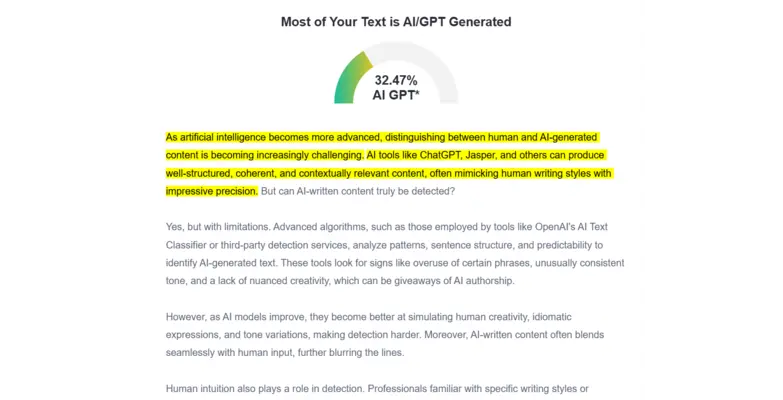 gpt-ai-result
gpt-ai-result
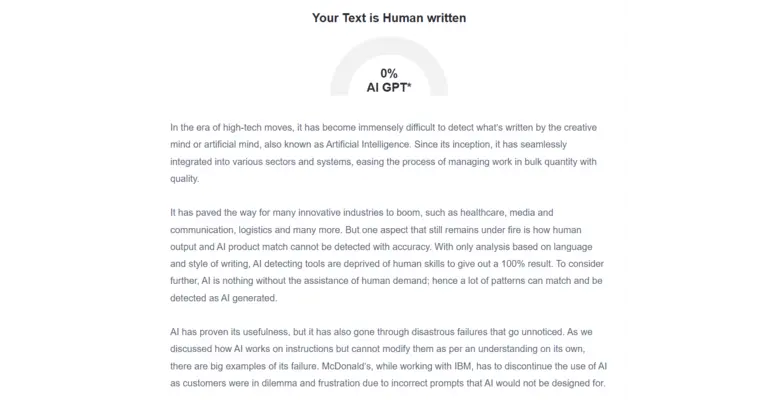 gpt-human-result
gpt-human-result
ZeroGPT Output: The tool detected 32.47% AI percentage in content written by ChatGPT and detected 0% AI content in the text written by Human.
Our Verdict
Both Copyleaks and ZeroGPT are popular AI content detectors, but each serves a purpose to the user differently. While both tools reflect the advances in AI detection, their strengths lie in different areas. Copyleaks is best suited for users requiring detailed and reliable analysis, such as academic institutions and enterprises, and excels in providing thorough detection capabilities. ZeroGPT, while user-friendly, currently falls short in detection accuracy, making it less suitable for high-precision scenarios. As said, the algorithm gets updated on a regular basis; we hope the tools get more accurate.
FAQs
How accurate is ZeroGPT?
ZeroGPT accuracy rate is claimed to be approximately 98%, making it reliable for general content detection tasks.
Is ZeroGPT reliable?
Yes, ZeroGPT is reliable for identifying AI-generated content quickly and effectively, especially for non-technical users. ZeroGPT plagiarism checker is another trustworthy tool that the platform offers.
How to bypass ZeroGPT?
Bypassing ZeroGPT may involve rewriting or heavily editing AI-generated content to mimic human-like writing, though this practice is not recommended.
Is Copyleaks legit?
Yes, Copyleaks is a legitimate and trusted AI content detection tool widely used in academia and professional sectors.
Is Copyleaks reliable?
Yes, Copyleaks is a highly reliable AI content detector, as it comes with advanced algorithms ensuring accurate detection of AI-generated and plagiarized content.
Is Copyleaks accurate?
Copyleaks boasts an accuracy rate of over 99.12%, making it one of the most precise AI content detection tools available today.
